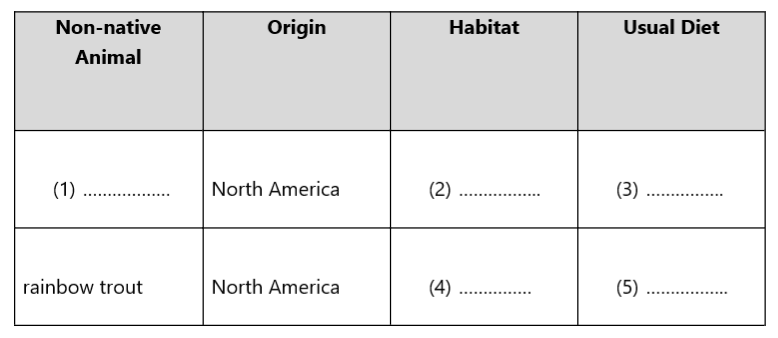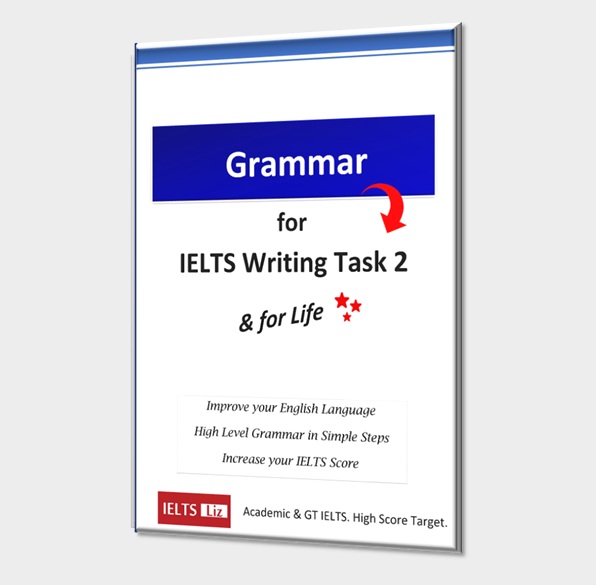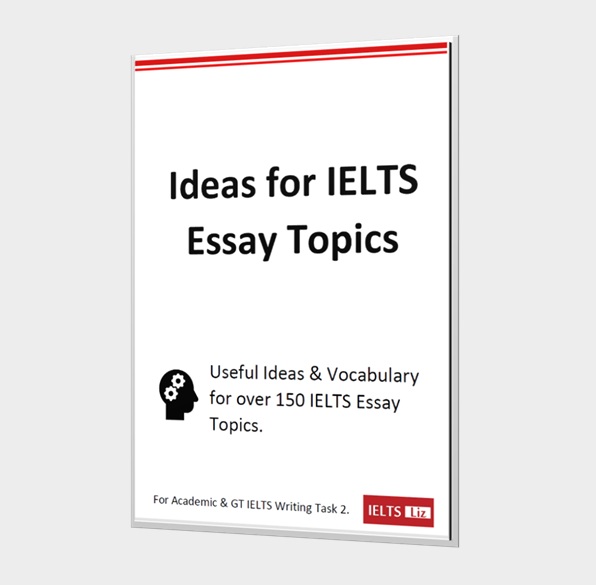IELTS Listening Section 4 is an educational lecture below are tips and a practice lesson to help you prepare. All candidates take the same listening test so this is the same for Academic and GT candidates. This is the most difficult section of the listening test. The listening exercise below is based on section 4 and it focuses on short answer questions. It is possible to get any question type in section 4.
IELTS Listening Section 4 Tips
- Section 4 is an academic talk by one speaker, a lecture.
- Please note, for candidates taking the General Training IELTS Test, you will be taking the same listening test and the same speaking test as the Academic candidates.
- Academic lectures are usually structured:
- Introduction – what the talk main points will be
- Middle
- Main Points with Detailed and Examples
- Conclusion – a summary
- This logical organisation of information will help you.
- Signposts:
- As the speaker moves from one point to another, they will say things like:
- Looking at X
- Moving on to Y
- Another interesting point is …
- You need to pay attention to these words.
- As the speaker moves from one point to another, they will say things like:
- Linking words
- Talks will also use linking words to add information, give an opposite point or give an example. All these words will help you understand the information and follow the points. Example words:
- Firstly, Secondly, Thirdly
- Also, in addition, moreover, furthermore
- by contrast, conversely, on the other hand
- for example, such as, like, namely
- You can find a list of common linking words on this page: Linking Words. Although the page is for writing task 2, they are formal linking words used for formal talks as well.
- Talks will also use linking words to add information, give an opposite point or give an example. All these words will help you understand the information and follow the points. Example words:
- Academic talks contain vocabulary relevant to the topic. Such vocabulary often isn’t paraphrased, which can be very useful in navigating the recording.
- Don’t try to understand everything. Focus on listening for answers only
- Predict the type of answer you need to listen for.
- Listen out for paraphrases of common words.
- For the listening practice below, answers will come in order
- Section 4 usually has 10 questions. The lesson below is a practice lesson rather than a test. The aim is for you to get used to the language and layout of listening section 4.
When you finish your listening practice, listening again and read the transcript at the same time. Answers are given below.
Practice for IELTS Listening Section 4
Section 4 Practice Lesson
Dolphin Intelligence
Questions 1-6: Write no more than three words and/or a number.
1. The lecture will concentrate on tools, communication, sonar and what other aspect of dolphin intelligence?
2. How big is the brain of the bottle-nosed dolphin?
3. What other species use tools?
4. What can dolphins copy from other species?
5. Can dolphins see out of the water?
6. What does a dolphin hear through?
RECORDING:
.
TRANSCRIPT & ANSWERS
Click below to reveal the transcript and answers:
TranscriptBut first let’s look at how the dolphin brain compares to the brains of other species in terms of size. The largest brain in the world belongs to the sperm whale. Weighing some 9,000 grams, it is six to seven times larger than the human brain. The second largest brain in the world is the killer whale (or orca) at 6,000 grams. The next largest brain among the marine mammals is the bottlenosed dolphin at 1,500 grams, followed by human brains at approximately 1,200 grams. Strong connections between the sensorial and motive areas of a dolphin’s brain to the body indicate that it is very much sensitive to pain and stress.
Looking at the way dolphin’s use tools, while many believe that primates, such as chimpanzees, are the only species who use tools for activities, dolphins studied in the wild have been seen using sea sponges to protect their snouts from getting scratches as they scavenge for food on the ocean floor. Dependent calves, young baby dolphins, are also provided with sponges from their mothers, as research in the wild has seen infant dolphins wearing tiny sponges on their snouts while swimming close to their mothers.
With regards to dolphin communication, dolphins utilize “signature whistles” to identify themselves to others. In other words, these whistles can be seen as representing their names. Furthermore, dolphins also mimic movements of both humans and other animals.
Another interesting point about dolphins is of course their sonar. It has been suggested by several noted scientists that dolphins may be able to create acoustical holographic images from the interlacing of their sonic output. It is well known that dolphins can see inside the bodies of their fellow dolphins, and other animals in the water. This is because dolphin sonar evolved to pass through water and does not reflect until it hits something like bone or air sacs. Since animal bodies are more than 50% water, their sonar enables them to literally “see” inside other animals.
And finally, dolphins have fantastic sensory capacity. They have the ability to focus their eyesight due to the curvy characteristics of their lenses, thus they are able to see both in and out of water. Moreover, dolphins have little more than a small hole for hearing, as having larger ears would severely affect the creature’s ability to swim. Rather, studies show that sounds are obtained through tiny bones, and then are transferred to the inner ear through the fatty material that surrounds the eardrum. Adapted from Bluevoice.org
2. 1500 grams / 1500g
3. primates / chimpanzees
4. movements
5. yes
6. (a) small hole
note: when you see brackets in an answer key, it means the word in brackets is optional. Your answer is right with or without it. You can’t use brackets in your test.
- capacity = ability
- indicate = show / point to
- primate = monkey
- snouts = noses (for dolphins and pigs)
- scavenge = hunt / forage
- infant = new born / child
- mimic = copy
.
************************
Recommended for IELTS Listening
Click here: ALL IELTS LISTENING FREE LESSONS & TIPS
.







